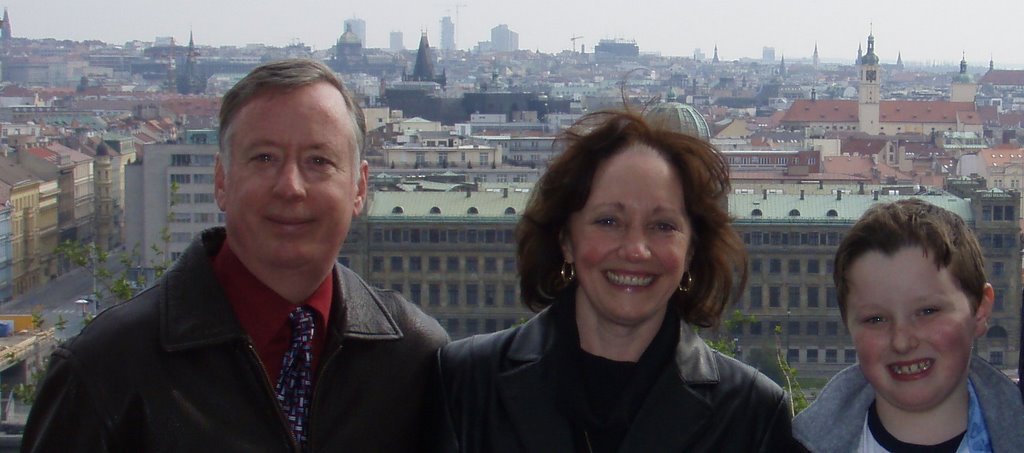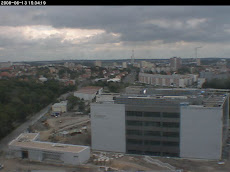We took a trip today to Cesky Krumlov to check another item off the list of things to see before we leave Prague in a few weeks. The Garmin got us there without an y significant problems (just a little hiccup where a new section of highway was recently completed) and I was even able to bring up the closest parking lot to park in. It was really smooth.
Here we are upon our arrival at Cesky Krumlov. A nice German lady took our picture for us.
Cesky Krumlov is a UNESCO world heritage site and is an amazing place. The Vltava river - the same river that runs through Prague 150 miles to the north - surrounds teh town on three sides. This made the town more easily defended.
From Wikipedia:
Construction of the town and castle began in the late 13th century at a ford in the Vltava River, which was important in trade routes in Bohemia. In 1302 town and castle was owned by the House of Rosenberg. Emperor Rudolf II bought Krumau in 1602 and gave it to his natural son Julius d’Austria. Emperor Ferdinand II gave Krumau to the House of Eggenberg. From 1719 until 1945 the castle belonged to the House of Schwarzenberg. Most of the architecture of the old town and castle dates from the 14th through 17th centuries; the town's structures are mostly in Gothic, Renaissance, and Baroque styles. The core of the old town is within a horseshoe bend of the river, with the old Latrán neighborhood and castle on the other side of the Vltava.
The town became part of the Austrian Empire in 1806 and Austria-Hungary in 1866. 8,662 inhabitants lived in Krumau an der Moldau in 1910, including 7,367 Germans and 1,295 Czechs.
After World War I, Krumau belonged from October 1918 until September 1919 to Upper Austria within the Republic of German Austria. In November 1918 Czech troops occupied the town. During the interwar era it was part of Czechoslovakia. Between 1938 and 1945 it was annexed by Nazi Germany as part of the Sudetenland. The town's German-speaking population was expelled after liberation by the American Army during World War II and it was restored to Czechoslovakia.[1]
During the Communist era of Czechoslovakia, Krumlov fell into disrepair, but since the Velvet Revolution of 1989 much of the town's former beauty has been restored, and it is now a major holiday destination popular with tourists from Germany, Austria, and beyond. In August, 2002, the town suffered from damage in the great flood of the Vltava River.
Český Krumlov Castle is unusually large for a town of Krumlov's size; within the Czech Republic it is second in extent only to the Hradčany castle complex of Prague.
Český Krumlov is home to Pivovar Eggenberg brewery. It has also been used as filming locations for movies such as the 2006 films The Illusionist and Hostel.
Part of the castle complex. In the Czech Republic it is second in size only to Prague castle. We climbed up to the area just below the dome.
Here is a picture from the castle looking back down on the town and the Vltava River.
Riding the river is a popular thing to do in Cesky Krumlov.
Sunday, May 25, 2008
Cesky Krumlov...
Posted by
Al Tischler
at
7:06 PM
![]()
![]()
Labels: Czech Republic, travel
Subscribe to:
Post Comments (Atom)






No comments:
Post a Comment